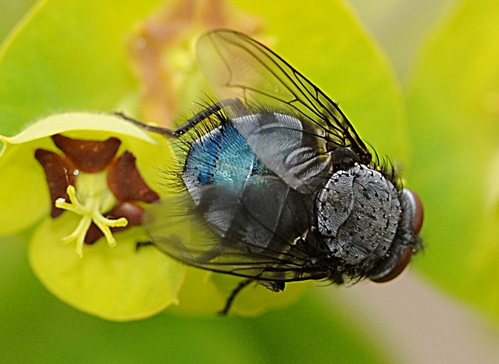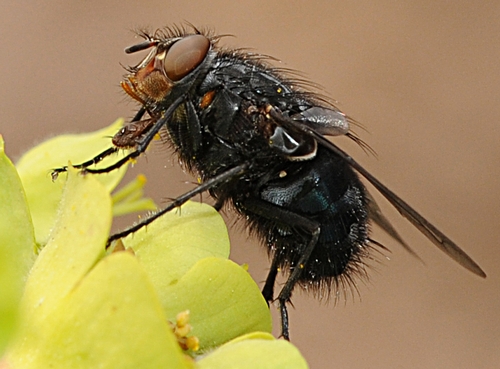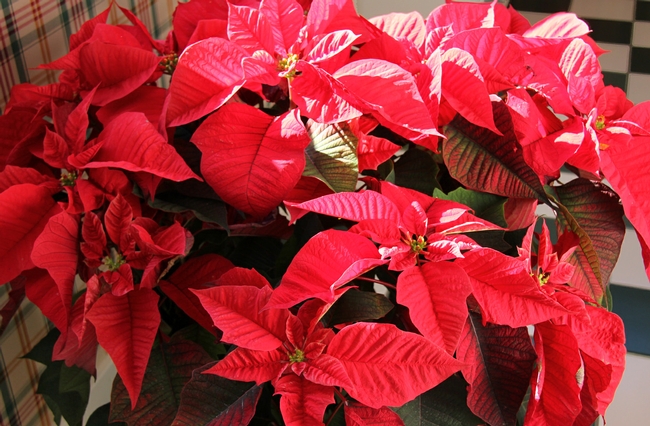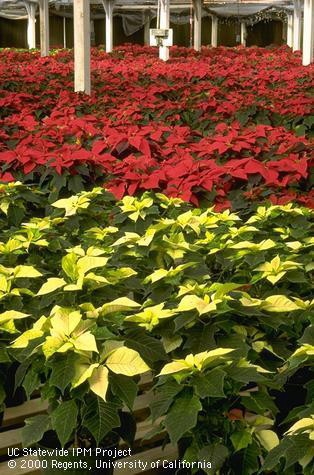Posts Tagged: Euphorbia
Euphorbias-Plants of Interest
Have any euphorbias growing at your house? You know those strange prickly, very leggy things with few leaves and maybe red or orange flowers. Euphorbia milii or Crown of Thorns probably came zipping to mind at that description. Many folks think euphorbias are only that! No so; many euphorbias are indeed prickly, but others are smooth, fleshy stemmed plants with the occasional tufts of small leaves.
Many euphorbias are listed as succulents while other varieties are not. Some are cactus-like while others such as the Christmas poinsettia, Euphorbia pulcherrima, can grow leggy up to 10 feet or taller. A number of euphorbias have a group of brightly colored bracts which are commonly referred to as the flowers; the true flowers are inconspicuous – the “flowers” of the poinsettias which we love for the showiness of flower and size are merely the bracts.
Euphorbia milii are one of my favorite house plants. If we lived in the San Diego area, these plants would be living outside in rich, porous soil in containers or in the ground itself either trained on a trellis or small frame work. The most common bract colors are red, orange, and pink. If you are lucky, you can find colors of white and pink with an orange splash. Talking with the owner of the Great Petaluma Desert some years back, I was amazed to find that he was able to propagate all colors of the crown of thorns –except the white. For some strange reason, that particular plant is very difficult to start from cuttings.
Say you are interested in euphorbias but don’t care to get full of scratches. Never fear, there are plenty of species of the family ready to call your garden home! How about Euphorbia obesa or baseball plant. Considered a succulent, it is a house plant or indoor/outdoor container plant. A solid, fleshy, gray-green sphere or short cylinder growing to 8 inches in height, with brownish striping and brown dots that resemble the stitching on a baseball. The only requirements for growth are good drainage, bright light, warmth, no sudden temperature changes, and keeping watering to a minimum. Believe me about the watering, too much and the thing keels over as though shot! I had to kill off 2 of them before getting the message.
Growing any euphorbia in the house successfully means understanding the light and temperature requirements of these plants. Grow them almost anywhere in the house and they will survive; put them in a window where there is sunlight, but no real direct sun and where they are near a window with no coverings between the plants at night. This is because they want warm days and cold nights, just like their native lands such as India and various parts of Africa.
When looking for euphorbias in the succulent section of your favorite nursery, check the plants carefully. If you don’t check, you may grab cacti in error. How to tell the difference when the desired plant has thorns? Look closely as the thorn attachment area; if you see a pad-like area (called an areole) that looks fuzzy with a number of thorns coming out, you’re holding a cactus. No pad and 1 or 2 thorns emerging at the same place, you have a euphorbia.
Go to a cactus and succulent sale or show to see the variety and wonder of the euphorbia world. I dare you to walk away empty-handed; I know I can’t!
More About Poinsettias
The fire-engine red Euphorbia pulcherrima boldly announces that the holidays have arrived each year. Most of us simply call it the Poinsettia, but the plant is also known as Zack Wood or noche buena in other regions. Modern America refers to the plant as Poinsettia’s after Joel Roberts Poinsett, an American Minister to Mexico during the early 1800’s. Annually, a week or two before Thanksgiving, local retailers everywhere display and peddle my favorite holiday plant. Every year, I pick up a couple of these plants for my holiday display in my home and at the office. Last year, after the holidays were over, I kept a plant in my kitchen window and eventually planted it outside when early Spring arrived. My effort quickly failed, a few days of frost had murdered my colorful Euphorbia pulcherrima that had since turned entirely dark green before its outdoor demise. The climate in Solano County was not the proper environment to support its sensitive needs. Poinsettias cannot withstand night temperatures cooler than 50 degrees and are not fond of temperatures over 70 degrees either. The poinsettia is not overly thirsty and can thrive if you keep her inside under a window that is exposed to the bright morning sun with less exposure later in the day after the sun heats up more. Last year it was fun to watch the red leaves turn dark green after the holiday season was over. Happy Holidays ~
Poinsettia Care
Poinsettias, Euphorbia pulcherrima, are my favorite holiday plant. Every year, I buy four to six plants to decorate my home. I love the bright red flowers and they add such a festive touch! Plus they are now available in many colors – white, pink, burgundy, etc. Some even have glitter on them to add more sparkle to my home.
Poinsettias require bright light. If possible, place them near a sunny window where it will get the most available sunlight. A window that faces south, east, or west is better than one facing north. A temperature between 65º F and 70º F is ideal during daylight to keep the plant in bloom. Avoid exposing the plant to hot or cold drafts, such as furnace air outlets, which may cause premature leaf drop.
Keep plants well-watered but do not over water. Check the soil daily. When the surface is dry to the touch, water the soil until it runs freely out of drainage hole in the container. A wilted plant may drop its leaves prematurely. Enjoy your plants and happy holidays!
Sugar High
Honey bees sip nectar from the Mediterranean spurge (Euphorbia characias wulfenii) planted in our bee friendly garden. So do flies. Last weekend...

Blue on Green

Blue Abdomen

Sip of Nectar



